 Angkor Wat is what most people call the entire complex of temples located outside Siem Reap in Cambodia. However, Angkor Wat is actually the name of one temple, the largest within the complex of over 100 temples. The larger complex is the Angkor Archaeological Park and is a UNESCO World Heritage Site. This is part 1 of a 3 part guide about Siem Reap and visiting Angkor Wat in Cambodia.
Angkor Wat is what most people call the entire complex of temples located outside Siem Reap in Cambodia. However, Angkor Wat is actually the name of one temple, the largest within the complex of over 100 temples. The larger complex is the Angkor Archaeological Park and is a UNESCO World Heritage Site. This is part 1 of a 3 part guide about Siem Reap and visiting Angkor Wat in Cambodia.
The History of Khmer Empire and the Temples of Angkor
At one time, the Temples of Angkor were the center of the Khmer Empire; one of the world’s largest and most powerful empires ruling over much of Southeast Asia from 800-1400 A.D. The Khmer empire stretched throughout what is now part of present day Vietnam, China and Myanmar.
With temple construction spanning over 600 years, the architecture of the temples varies. During the reign of the Khmer empire, religious worship went through three phases- “Pantheon of the Gods”, Hindu and Buddhism. Temples reflect all of these styles depending on the timeframe of their construction.
The temple complex was huge. Irrigation allowed for farming and food production feeding the residents. It is a mystery why the Khmer abandoned the Temple of Angkor complex. It is known the empire moved their settlement from the Angkor location to the present day site of Phnom Penh.
There are hundreds of temples here at Angkor Wat, and while you can probably rush and see the highlights in one day, if your itinerary allows, we advise several days visiting Angkor Wat would be much more enjoyable.
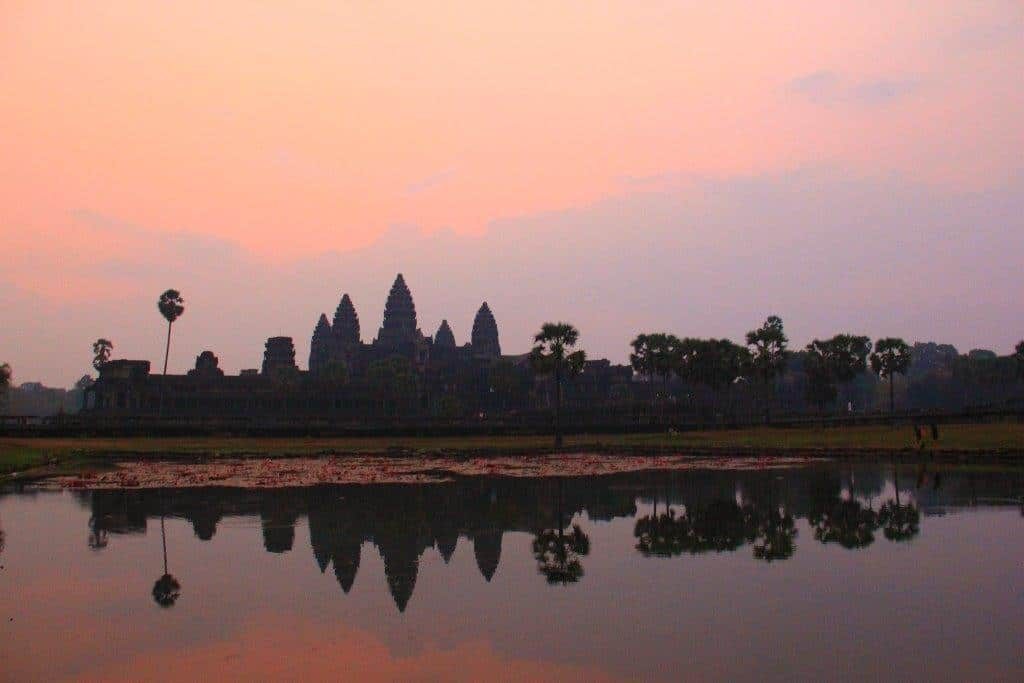
Must See Highlights of the Temples of Angkor
Visiting Angkor Wat Temple
In the 12th century, Angkor Wat which means “temple-mountain,” was built as the spiritual home for the Hindu god Vishnu. The carved reliefs on the walls tell the narrative of Vishnu and other Hindu tales. There are over 2000 asparas, the dancing ladies pictured here, carved into the temple walls of Angkor Wat.
Angkor Wat is known as a “city pagoda” meaning it was not just a temple but also a city with residents. It is the world’s largest religious temple.
A common spot for photos is the edge of the Angkor Wat temple complex for sunrise. Note the first part of that sentence, “common”, this is not solitary moment. The number of people here for the sunrise photo shot is staggering! Just look at your fellow photographers!
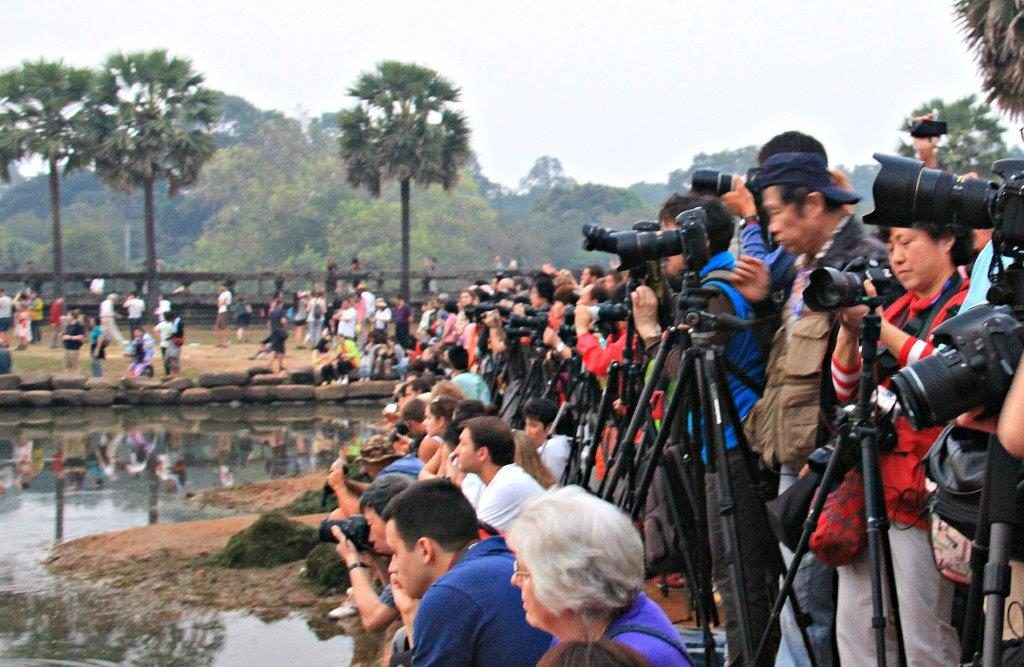
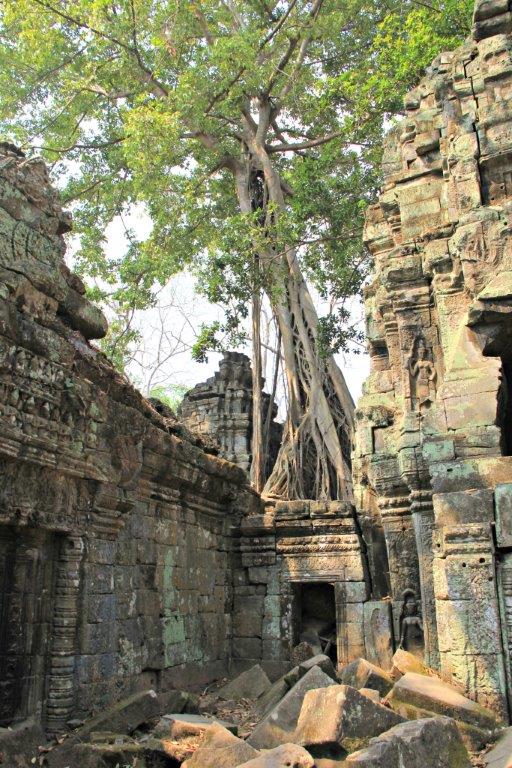 Temple of Ta Phrom
Temple of Ta Phrom
Also a very popular temple, Ta Phrom is a temple receiving no restoration. The Cambodian jungle has “reclaimed” the Ta Phrom, with the trees and tree roots of the strangler figs now becoming a large part of the visitor experience.
The popularity of Ta Phrom is due to it featuring in the movie Lara Croft: Tomb Raider. The temple’s original purpose was a monastery.
Angkor Thom
This temple complex translates to “Great City” and was once the capital of the Khmer empire. One of the largest Khmer cities ever built it is over 9 square kilometers. Angkor Thom remained the Khmer capital until the mid-17th century. This complex is huge and for much of it the wall and original moat are still intact and visible. The entrance gates and smaller temples are quite ornate. (The picture at the beginning of this post is one of the entrance gates.)
Bayon Temple
Actually one of the central temples in Angkor Thom, the Bayon Temple is worth a mention all its own.
Built in the latter part of the 12th century by King Jayavarman VII, Bayon is one of the most widely recognised temples in Siem Reap because of the giant stone faces adorning the towers of Bayon. The very distinctive temple has 54 towers of four faces each, totalling 216 faces.
The Bayon Temple is a bit different to many of the other temples within the complex. It can get very crowded and is extremely popular for photos.
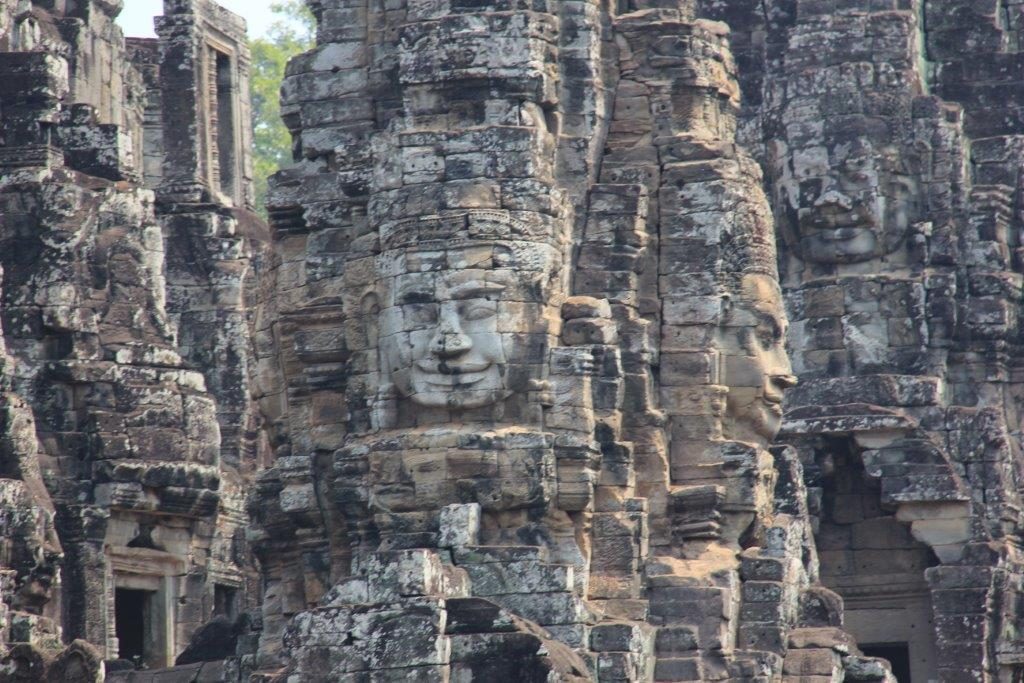 Temple of Bantey Srei
Temple of Bantey Srei
Many consider this the best or most beautiful temple within the Temple of Angkor complex. Carvings from pink sandstone make it quite unlike any of the other temples. Located 20 miles (37 kilometers) north of Angkor Wat and Angkor Thom it takes some time to get to Bantey Srei.
Built in the 2nd half of the 10th century, Bantey Srei translates as the “Citadel of Women” or “Citadel of Beauty.” Unlike most of the major temples in Angkor Wat, this was not a royal temple and construction is on a “miniature scale”.
The best time to visit Bantey Srei is early to mid morning and late afternoon, as the light makes the sandstone seem to glow red.
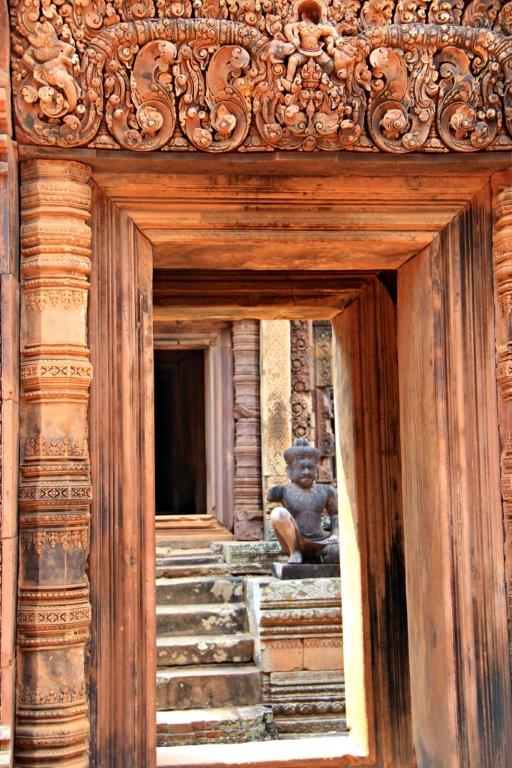 |
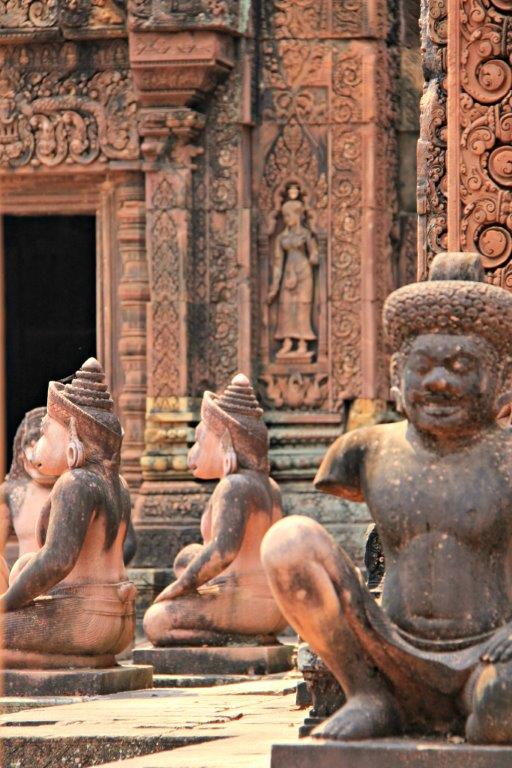 |
Practical Advice for Visiting Angkor Wat
There are two popular routes for visiting the temples of Angkor Wat; the Little Circuit (Le Petit Circuit), taking in major sites to the east of Angkor Wat and Angkor Thom and the Big Circuit (Le Grand Circuit), taking in major sites north and further out east.
The book Ancient Angkor by Michael Freeman and Claude Jacques also has itineraries, most popular temples, best times of the day to visit and good photography spots listed at the back of the book. (You can find other books, movies and cookbooks about Cambodia in the Compass & Fork shop).
You can buy the guidebook in advance or from someone at the park. There are many people selling it there. It will be much cheaper at the park than in a shop. Remember to bargain. Our guide laughed at us and told us we weren’t very good at bargaining. We paid $7 for the book (it is $27 in a shop). We just laughed. I am sure the vendor can use the extra couple of dollars more than we will miss them.
Do You Need a Guide for Visiting Angkor Wat?
The temples of Angkor are not signed, nor for the most part are there explanations for the carvings. It is possible to read the guide-book as you wander around but the names and carvings become quite confusing.
Using a guide is more relaxing, you will learn much more about the temples, so my advice would be yes, take a guide.
And then there are several options, day tours, going as part of an international tour group, private tuk tuks, or private guide and transport. For the sake of completeness I will mention it is also possible to ride a bike, but keep in mind the distances, the heat and that fact it is a dirt road which is quite busy at times with buses, cars and tuk-tuks
Our Recommendation for Visiting Angkor Wat
 We organized a local guide through a local company based in Siem Reap. Our private tour was 3 days (we will talk more about other things we did besides visiting Angkor Wat in parts 2 and 3 of this series). The itinerary was specific to us and what we wanted to see/do and based on their recommendations. Service was excellent and included a driver, guide and an air conditioned car. Upon returning from the temples to the car we were always met with cold water, a cool towel, a cool car and a smiling driver. All of which was much appreciated in the heat and humidity of the Cambodian jungle.
We organized a local guide through a local company based in Siem Reap. Our private tour was 3 days (we will talk more about other things we did besides visiting Angkor Wat in parts 2 and 3 of this series). The itinerary was specific to us and what we wanted to see/do and based on their recommendations. Service was excellent and included a driver, guide and an air conditioned car. Upon returning from the temples to the car we were always met with cold water, a cool towel, a cool car and a smiling driver. All of which was much appreciated in the heat and humidity of the Cambodian jungle.
Using a guide also allowed us to avoid the crowds and visit the temples at times when they were less busy. Our guide was aware of what was happening each day within the park and could shift our itinerary accordingly. He also knew the best times and the best views/angles for photos.
Our Guide for Visiting Angkor Wat
Our guide, driver and the owner of the company are all local Cambodians. This was one of the aspects we really enjoyed. We learned about the experiences of the parents under the Khmer Rouge. It was wedding season and as we passed many weddings (you will see them on the road), they explained their own weddings and the local customs. Restaurants selected for lunch allowed us to try local dishes. The whole tour was most enjoyable and affordable. To give you an idea of cost, the entire service was about $100 USD a day. (We received quotes for over 3 times this cost- and I don’t think they could have been 3 times better.) Obviously the cost will vary based on your itinerary and needs.
You can find Sam Pho at Angkor Driver Sam Sam can assist you with hotel and other travel arrangements as well.
Admission Fees for Visiting Angkor Wat
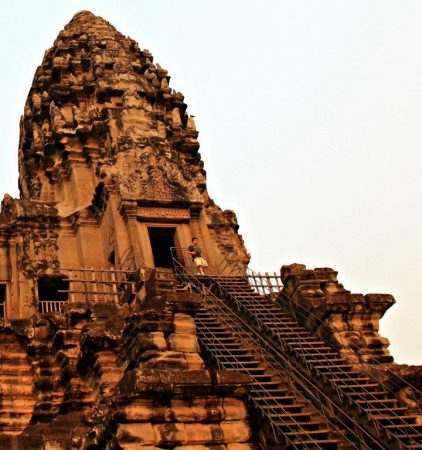 Unless you are Cambodian you will need to buy an admission ticket to the Angkor Archaeological Park . One, three and seven day passes are available. (The 7 day pass is any 7 days in a 30 day period.) Your picture is on the pass and you must wear it at all times. Expect substantial price for admission for the Temples of Angkor following recent announcements.
Unless you are Cambodian you will need to buy an admission ticket to the Angkor Archaeological Park . One, three and seven day passes are available. (The 7 day pass is any 7 days in a 30 day period.) Your picture is on the pass and you must wear it at all times. Expect substantial price for admission for the Temples of Angkor following recent announcements.
The park opens at 5 am and most temples close at sunset. Dawn and dusk provide some great picture opportunities as well as a chance to beat the heat and the crowds.
Weather when Visiting Angkor Wat
The best time of year for visiting Angkor Wat is November to February. Peak season is December and January when there is less rain and it is cooler. 75-85F (25-30C) March to May it may be closer to 105 F (40C). We were there in February and the heat (and humidity) was staggering! You need to factor the weather into your visit as climbing temples in the middle of the afternoon is not ideal!
Look how steep and exposed these stairs are!
In Cambodia June through October is rainy season (monsoon).
More Information about Visiting Angkor Wat
Join us next week for Part 2 of visiting Angkor Wat in Cambodia. We will cover some of the other temples, visiting Tonle Sap Lake. Part 3 of the series is what to see and do in Siem Reap. You can find advice on bars and restaurants in The Best Restaurants, Happy Hours, and Hotels in Siem Reap.

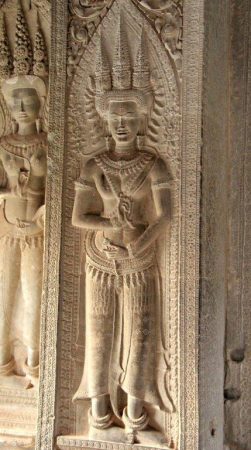
Mary - A Mary Road
I haven’t really been in Cambodia, but I heard great things about it. So hopefully soon!
Editor
We really enjoyed it, as you can tell. And Angkor Wat is just magnificent.
Jessica
The photo of the photographers look either overwhelming or exaggerating. Lol. But can’t blame them due to the stunning shots you can get from Angkor Wat. If I will be traveling in a group, a tour would be best, but if I go solo, will make DIY maybe.
Editor
Jessica, probably a good approach for traveling to Angkor Wat. We were a group of 2 traveling independently and our guide gave invaluable insights and steered us away from sights when they were too busy, except the dawn photo!
Vyjay
This is a very detailed and informative post on Angkor Wat, a place that is a dream destination. I am intrigued by the massive temple complex and each of the temples within. Also why the temple complex was abandoned is a haunting mystery. I will check out your other posts in this series as well. There is a wealth of information here which would help us when we do get there.
Editor
Thank you please do check out the other posts in the Angkor Wat series here and here. It is a fascinating place and the other posts do provide lots of other things to see and do in the area.
Kimberly Erin
oh.my.god. that picture of all the photographers actually blew my mind…they look so stuffed in there Its like a can of sardines!
Editor
Yes the one spot you cannot get away from the crowds – dawn at the main angkor wat temple. Simply stunning and not to be missed. Possibly the most photographed place on earth.
Tracie Howe
Great practical advice here for visiting Angkor Wat! I wished I had been better informed before I went. I think it’s important that you pointed out how crowded some spots can be for photos. It’s better to expect that than to show up and be disappointed!
Editor
Tracie, I agree. I also think people think they will see it all in a day and between the crowds, the sheer size of the temple complex and the heat, I just think that is totally unrealistic- if I crammed it all into one day I’d be miserable.
Cynthia @Journal of Nomads
It was very interesting to read about the history of Angkor Wat. What a fascinating place!
Editor
It lives up to it’s well deserved reputation. A stunning place.
Subhadrika Sen
Angkor Wat is quite a famous and touristy place in the South East Asia. Although I have never been there i have seen lots of photographs and read about the place. But I must say your details are great. i had never read so many details about this place and the about the history of this place. Your photographs are great too.
Editor
Well thank you for that. We had an excellent guide who was very good with the timing of our visits to various highlights of the complex.
Jennifer
Angkor Wat has been on my must visit list forever! Pinning it for later!
Editor
Keep it on your list, you will get there one day and you will be so glad you did.
Shobha
I’d love to visit Angkor Wat. It’s been a long-standing ambition but we can never seem to organise it with the kids’ school vacations. I’ll definitely be bookmarking this for when we do.
Editor
Keep it on your bucket list, it is definitely an inspiring place to visit. It was on our bucket list for years before we managed to go there.
Julie @ Girl on the Move
Loved your section on practical advice for visiting…I probably would have just bought the book in the shop not thinking about waiting until I got to the temples so that’s good to know!
Editor
Julie, until you arrive there you not to know these things. We thought just like you did. Always good to hear from someone that has been there. Thanks for your comment.
Chris
I have been told that much of Ta Phrom now has barriers for the protection of the ruins.
It is obviously necessary, but a little sad that the last decade has seen the need for such additions.
I can see why people love to use a guide, however I often like to read about what I’ve seen after the event, rather than attempt some understanding whilst in awe of the place at the same time 🙂
Editor
Chris, I usually read about it afterward as well. It makes it sink in. I do find it helpful some time though to know what I am looking at so when I read it later I have those Ah- hah moments.